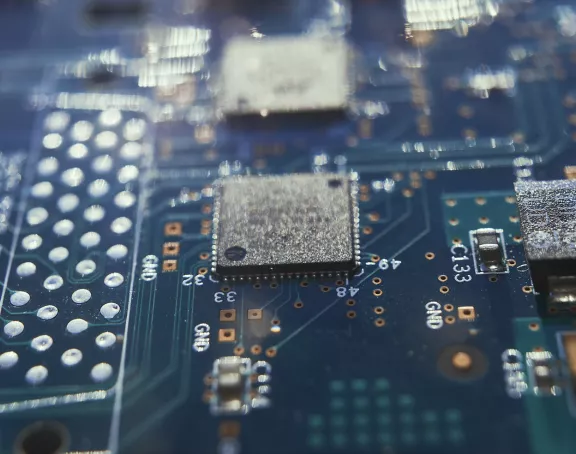Law and AI (part 3): towards a European perspective in intellectual property?
On 20 October 2020, the European Parliamentary Assembly adopted, on the basis of three reports, three resolutions on AI from three different perspectives. These resolutions have been published in the Official Journal on 6 October 2021. The objective of the three reports and the three resolutions was to influence the Commission legislative proposal on AI. In three different blogs, we outline the key suggestions proposed by the European parliament. In this one, we discuss the report and the resolution intellectual property rights (IPRs) for the development of artificial intelligence technologies.
Introduction
The European Commission published on 24 April 2021 a proposal for a regulation “laying down harmonised rules on artificial intelligence”.
However, the process began two years ago.
On 10 April 2018, during the Digital Day, 25 European countries signed up to cooperate on this matter by a common Declaration of cooperation on Artificial Intelligence. On 25 April 2018, the Commission issued a Communication called “AI for Europe”. In June 2018, a High-Level Expert Group on Artificial Intelligence, a group of 52 experts to support the implementation of the European Strategy on Artificial Intelligence, presented their Policy and Investment Recommendations for Trustworthy AI. The Commission issued on 8 April 2019 a Communication to build trust in human centric AI and, on 19 February 2020, a white paper called “White Paper on Artificial Intelligence: a European approach to excellence and trust” and a report on the safety and liability implications of Artificial Intelligence, the Internet of Things and robotics. At the beginning of October 2020, the Committee on Legal Affairs of the European Parliament adopted three different reports on AI from three different perspectives. Then, on 20 October 2020, the European Parliamentary Assembly adopted, on the basis of these three reports, three resolutions on AI from these same perspectives. These resolutions have recently (on 6 October 2021) been published in the Official Journal.
The objective of the three reports and the three resolutions was to influence the Commission legislative proposal on AI. In three different blogs, let us review the key suggestions proposed by the European parliament. In this one, we discuss the report and the resolution intellectual property rights (IPRs) for the development of artificial intelligence technologies (see here). The two other blogs are available here and here.
What is the content of these two texts on AI and IP?
The adopted perspective of the European Parliament is the impact of the AI on IPRs. The links between these two topics are evident: the Union’s legal framework for intellectual property (IP) aims to promote innovation, creativity and access to knowledge and information. Innovation, creativity and access to knowledge are also three important axioms in the development of AI. However, “AI technologies may render the traceability of IPRs and their application to AI-generated output difficult, thus preventing human creators whose original work is used to power such technologies from being fairly remunerated”.
In this respect, and to guarantee the respect of the IPRs, the report and the resolution stress the need to take into account the protection of IPRs in the perspective of the establishment of the future European legal framework on AI. They acknowledge the potential of AI to improve the enforcement of the IPRs. They suggest a sectorial impact assessment on IPRs in the development of AI technologies.
In the future harmonised regulatory framework in the field of AI technologies (that should take the form of a regulation rather than a directive), it is essential to have a balanced IPR protection in relation to AI technologies that should lead to a high level of protection of these rights. The legal framework has to ensure the trust of the consumers, the AI actors and the IPRs holders. The assessment of the cross-links between IPRs and AI have to take into account “the degree of human intervention, the autonomy of AI, the importance of the role and the origin of the data and copyright-protected material used and the possible involvement of other relevant factors”.
The resolution notes some potential impact of the AI technologies on the particular IPRs. For example, with regard to patents, the text points out that mathematical methods (used in AI developments) as such are excluded from patentability. With regard to copyright, the creative process of generating content of an artistic nature can raise many issues.
In particular, the European Parliament emphasises the need to think about the question of the ownership of IPRs in the context of AI, considering that it would not be appropriate to give the legal personality to AI technologies. In the perspective of the potential granting of a protection by IPRs, the European report and resolution also consider that it is necessary to make a clear distinction between
- Creations linked to the developments of the AI technologies, and
- Creations generated by AI.
Both types of categories must be capable of being protected by IPRs: this is essential to stimulate innovation. These creations must also respect the existing IPRs and their derogation, where they are based on the use of existing data, inventions or works.
More globally, the European Parliament calls “to provide balanced and innovation-driven protection of IP, for the benefit of European AI developers”.
Conclusion
This short analysis of the report and the resolution demonstrates, once again, the overarching IP issues that AI presents. Once again, the European Parliament is not proposing a major revolution. At most, it indicates that IP rules need to be adapted to be fully applicable to AI technologies and creations. This is where the challenge lies: to make the use of AI attractive by guaranteeing the legal protection of the resulting output.
As we know, it is essential for a company to protect its creations and inventions (as assets). Companies active in AI are no exception to this logic. However, valorising these immaterial elements proves to be complex, as the conditions and regulations are so numerous. It is essential to be able to identify, analyse, protect and enhance this IP, including when it is part of the AI technological environment. Good advice is essential in this respect.
This article was co-authored by Edouard Cruysmans in his capacity of Professional Support Lawyer at Stibbe.


